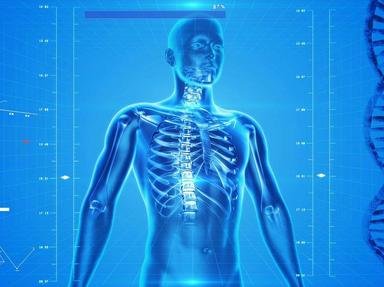Quiz Answer Key and Fun Facts
1. Connective tissue has a large variety of functions in the body, and can be as different as blood and bone! However every connective tissue is made up of two basic elements - cells and which of the following?
2. The suffix "-blast" (e.g. osteoblast) refers to the mature form of the cell, while "-cyte" (e.g. osteocyte) refers to the immature form.
3. Connective tissue contains various types of cells, one of which is mast cells. What are these cells principally involved in?
4. Three types of fibers are found in connective tissue matrix. Which of these is NOT one of those?
5. What is the abbreviation commonly used to describe glycosaminoglycans, a component found in the ground substance of the matrix?
6. Which of these diseases is a disorder of the elastic fibers found in connective tissues? Sufferers tend to be tall and have long limbs and digits.
7. Connective tissue can be classified according to the relative amount of ground substance and the orientation of fibers. The classifications are loose (or areolar), dense irregular, and dense regular. Which of the following has a dense regular classification?
8. Cartilage is a connective tissue that is found in three types: hyaline, fibrocartilage, and elastic. Apart from the epiglottis and larynx, where is the only other place elastic cartilage is found?
9. Mature bone is vascular - it contains blood vessels which are surrounded by rings of bone. This structure also contains the cells (osteoblasts/-cytes) between the rings of bone, and was named after the Englishman who first described them. His first name was Clopton; what was his last name?
10. Osteoarthritis affects more women than men.
Source: Author
reeshy
This quiz was reviewed by FunTrivia editor
crisw before going online.
Any errors found in FunTrivia content are routinely corrected through our feedback system.

